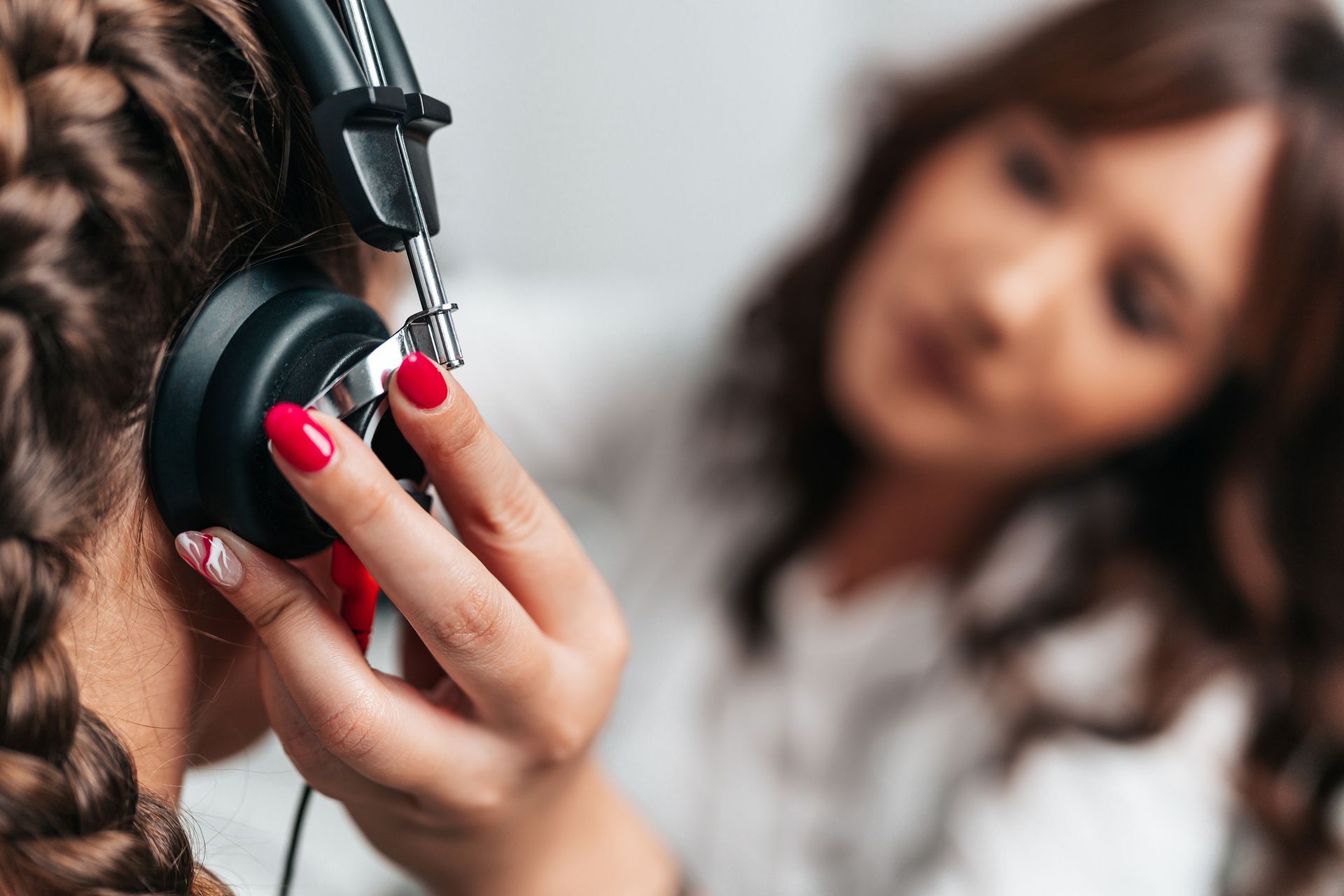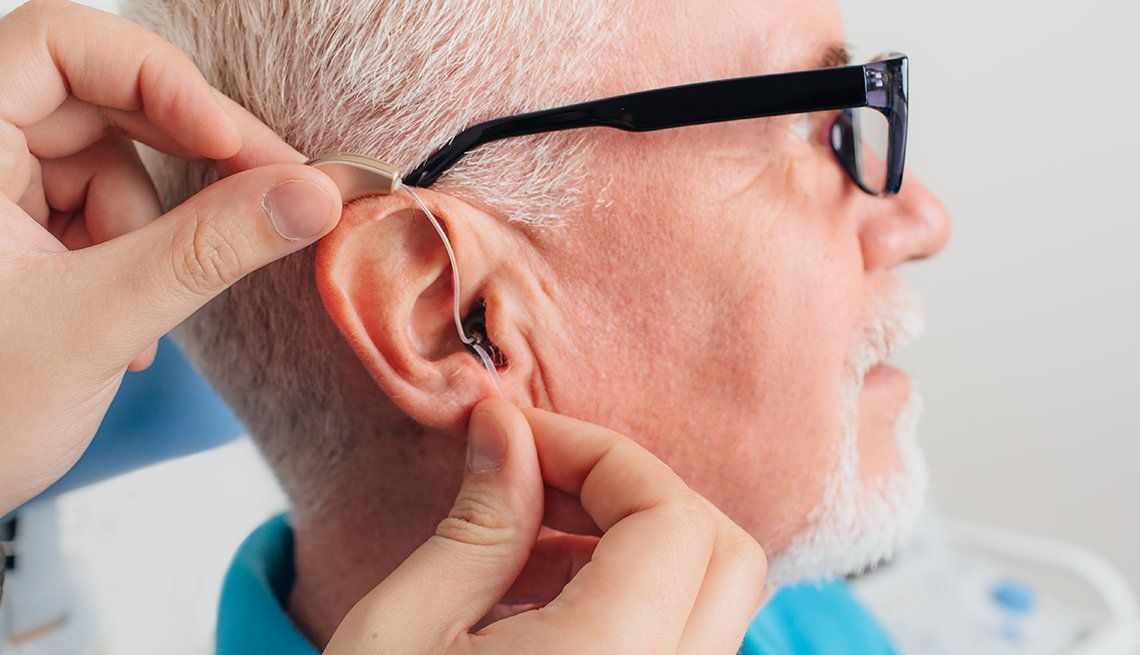Guide to Understanding Modern Hearing Aid Technology
The term hearing aid technology is an umbrella term used to describe the different models and performance levels of hearing aids. A higher performing hearing aid will often provide more options for customization and an overall increase in processing power, to help those with hearing loss overcome more challenging listening situations.
The technology level tends to be one of the main influencing factors on the cost of hearing aids
Popular modern features of hearing aids, like Bluetooth connectivity and rechargeable batteries, tend to be available in most models, leaving the level of technology as the most crucial factor in choosing new hearing aids.
At Red Door Hearing and Speech, we rely on the results of your hearing test to help decide the best technology level to match your specific hearing needs.
How Hearing Aids Improve your Hearing
Hearing loss has many different causes, however, in general it is caused when there is a break down somewhere along the hearing pathway from the outer ear through to the brain. Sound is unable to travel its normal path and the brain is unable to interpret the signal it has been provided. Hearing aids improve the ability of the ears to collect sound and to send a clearer signal to the brain to process and interpret. Hearing aids help by improving how sounds are collected and filtered – all according to your individual hearing loss.
There are five main components of hearing aids:
- Microphone: Collects sound.
- Amplifier: Amplifies and converts sound waves into electrical signals.
- Power Source: Powers the device with a disposable or rechargeable battery.
- Speaker: Outputs the optimized sounds.
- Processor: Enhances or adjusts the electrical signals based on the frequencies that are necessary for your hearing loss while minimizing unwanted noises.
In recent years, most of the technological advancements in hearing technology have related to the processor. These micro innovations have contributed to hearing aids that sound more natural and are more effective at managing hearing loss.
Hearing Aid Types
There are a few distinct factors that help distinguish between the different styles of hearing aids.
Styles of Hearing Aids
Hearing aid style refers to how the hearing aid fits in (or on) your ear. It is the most common categorization of hearing aids.
- Mini Receiver in the Ear: Most of the electronic components sit in a small case behind the ear, with a small receiver sitting inside of the ear canal.
- Behind the Ear: The electronic components sit outside the ear, with a small tube and custom-fit earpiece entering the ear.
- Invisible in the Canal: Custom made for each user, these are the smallest hearing aids available and are virtually invisible because the entire device fits in the ear canal. The electronics are housed in a case that sits inside the ear canal.
- Completely in the Canal: Custom made for each user; they are slightly more visible than the invisible in the canal option. The electronics are housed in a case that sits inside the ear canal.
- In the Canal: Custom made for each user, a slightly larger model that fills up more of the ear canal opening. Can provide a slightly longer battery life due to its larger size.
- In the Ear: Largest model of custom-made hearing aids. Fills up most of the ear and is slightly easier to handle due to its size. Can accommodate a larger battery and longer battery life due to its size. All electronics are built inside the custom-made shell.
Hearing aids are available in various colours to suit your personal taste or preferences. Typically, cosmetic options don’t impact the cost.
Technology Levels of Hearing Aids
Hearing aid technology levels describe the different components that impact the sophistication of the miniature computer found in the hearing aid. Similar to your personal computer, more advanced technology can run more complex software.
Hearing Aid Features
Hearing aid features improve the usability, experience, or comfort of the devices. Wind noise reduction and feedback suppression help to minimize and prevent unwanted noises. Bluetooth connectivity and telecoil options allow your devices to automatically connect to personal or public accessibility devices. Rechargeable batteries are also an option, convenient if you have trouble with changing small batteries every week.
Advanced Technologies
Advanced hearing aids process a wider range of sounds more precisely, and they can better adapt to different environments or situations.
- Sound quality: Optimize sounds according to the present conditions to provide balanced sounds in more environments and situations.
- Listening comfort: Improved protection against unexpected noises, like loud sounds and wind.
- Processing channels: More processing channels mean that a broader range of frequencies can be independently analyzed and processed. This improves the accuracy of the output and allows the hearing aids to better match an individual’s hearing profile.
- Speech understanding: The ability to strengthen sounds that are essential for understanding speech while filtering out sounds that are not important.
- More personalization: Advanced hearing aids can be more precisely fine-tuned, and they may have additional features such as tinnitus support.
Basic and Intermediate Technology Levels
Basic and intermediate hearing aids often look the same as their advanced counterparts, but they don’t have all the same processing capabilities. As hearing aids climb in technology level more features are made available to improve the quality of speech, reduce background noise and provide a more natural sound
Still, many basic hearing aids are still available in different styles and have features like telecoil connectivity, wind noise management and tinnitus support. They just don’t have the same degree of precision or processing capabilities.
The Best Way to Select Hearing Aids
As you have read, there is a lot of variety in hearing aids and hearing aid technology. You can choose the style, and technology level that will work the best for your individual needs. The key to knowing which options will work best for you is to understand your own specific hearing needs.
You can do this by booking a hearing test with Red Door Hearing & Speech. We’ll help you understand exactly what’s going on with your hearing and find the perfect personalized hearing aid solution to fit your needs.


